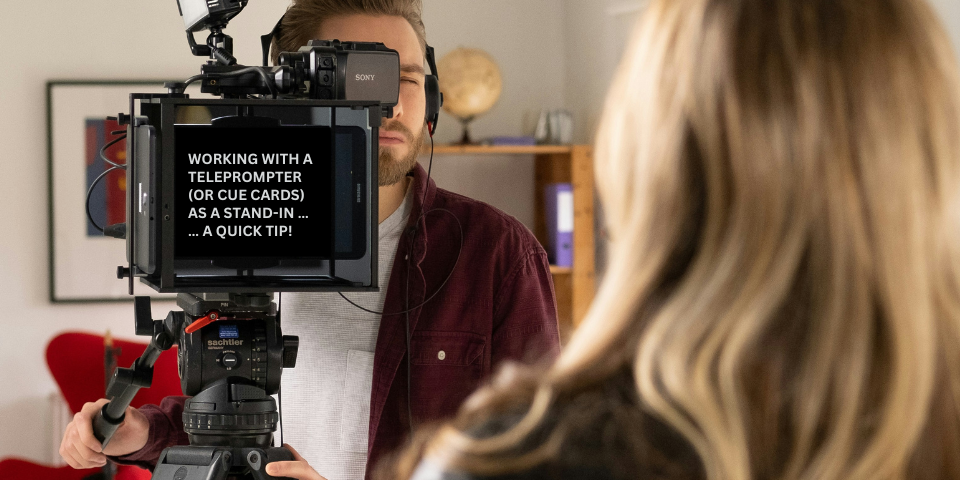This post is part of Stand-In Central’s deep-dive series into the coronavirus pandemic as it relates to stand-in work in TV and film. For more posts in the long-running series, visit https://standincentral.com/coronavirus.
— The Editor
Recently, amid the SARS-CoV-2 pandemic, Central Casting posted an article titled “Carrying Background: What You Should Know.”
The article speaks of a seemingly novel approach to hiring background actors as a measure “to ensure the health and safety of everyone on set.”
It speaks of “carrying.” Central Casting defines “carrying” as “a production will hire and pay Background Actors for a consecutive number of days, whether they work all of the days or not.”
What does carrying mean for stand-ins? Let’s see.
Stand-Ins Are Fundamentally Defined as Background Actors under Two SAG-AFTRA Agreements
Under SAG-AFTRA’s Theatrical Agreement and its Television Agreement, stand-ins are a type of background actor, even though stand-ins do not work per se on camera.
Therefore, when Central Casting is speaking of background actors, it is also speaking about stand-ins.
But Central Casting is not speaking about stand-ins when it is thinking of background actors on productions working under SAG-AFTRA’s Network Television Code. That’s a different contract with a different categorization of workers. Under the Network Television Code, stand-ins are not background actors but instead are a distinct category of worker.
Also, under SAG-AFTRA’s Commercials Contract, there technically are no background actors. The equivalent worker category under the Commercials Contract is “extra performer.” As with the Network Television Code, stand-ins are not fundamentally extra performers under the Commercials Contract. Instead, under the Commercials Contract, stand-ins are a distinct worker category.
That said, stand-ins on jobs working under either the Network Television Code or the Commercials Contract theoretically could be carried, even if they technically are not background actors.
“Carrying” and Stand-Ins
Central Casting’s post about carrying background actors seems to be speaking mostly about background actors working in episodic television because it speaks about “shows” rather than films. But theoretically carrying could also be the case for background actors working on feature films.
Central Casting’s post speaks specifically about carrying stand-ins toward the end. It reads:
Stand-Ins may also be asked to work in picture as various roles as well.
In other words, carried stand-ins may be asked to work also as background actors.
Should Stand-Ins Be Paid More If Asked to Do Background Acting, Too?
The aforementioned SAG-AFTRA contract distinctions matter when it comes to asking a stand-in to also do background acting or extra work.
- If you stand in on a Network Television Code project or on a Commercials Contract project, and if you also do background work/extra work, you are due an additional payment for that work.
- However, under the Theatrical Agreement and Television Agreement, stand-ins are not due additional payment if they also do background work.
That said, you may be able to negotiate for additional compensation in the event you are asked to do “double duty” (standing in plus background work) on a Television Agreement or Theatrical Agreement job.
Considering that stand-in work permits you in the pandemic to always wear a mask, and considering that background acting implies working without a mask, the “ask” of taking on the great risk/peril of removing your mask at work (and having contact with more crew people, like hair, makeup, wardrobe, etc.), implies additional compensation for your work.
The sooner you negotiate yourself that standard, the better. Sometimes SAG-AFTRA field reps are helpful in these kinds of negotiations.
Ben’s Tip!
In the Theatrical and Television Agreements, toward the end in Schedule X, Part I and Part II, there is Section 7, which we’ve discussed recently on Stand-In Central. It is a section that entitles background actors working in hazardous or dangerous conditions to additional compensation.
If you agree that you are being put in additional danger or hazard by working as background, make sure to address your contract rights under Section 7 to additional compensation for such work. In general, it is up to you to negotiate. This article on Stand-In Central talks about doing that.
More about the Logistics of Carrying
As the article explains, if you are hired and carried on a job, you will be paid for that stretch of days for which you are carried — even if you are not brought in.
For instance, you may be carried Monday through Friday and work only one of those days, never going in the other four days. In such a case, you would still be paid for those five days.
However, even if you are not being brought in on a day, there is the chance of a rush call and that you may be expected to report to work within a reasonable amount of time. On these days, you are essentially “on call” and are getting paid to be such.
On days you aren’t evidently booked, Central Casting cautions against taking another job for that day. It writes, “[If] you are carried on a show, please do not double book yourself on another project.” Central Casting underscores this point: “Please do not book other roles during this time. Carrying background is one of the ways productions are maintaining the health and safety of their sets; please do your part to keep exposure and risk as low as possible.”
Questions about Carrying
There are evidently some questions that remain about carrying.
For How Long Should Stand-Ins Be Available in a Day Not Brought In?
One question is, in the event you are carried, whether you will be told what time period you should be available on a day you are not working. Will Central Casting let you know that you have to be available for a time range of hours?
If you are not in the loop about production’s shooting schedule, and don’t know if they are doing day shoots, splits, night shoots, or overnights, it will be impossible to understand when to be awake for a rush call and how late to be up. Hopefully, Central Casting will tell you on the dates you are not needed at what time range you need to be available, rather than vaguely saying “You need to be available all day.”
(In other words, how will a stand-in know if production has wrapped and won’t be rush-calling anymore? It would be ridiculous not to inform a stand-in this, and keeping this stand-in thinking s/he must stay up until midnight or 2am even though production wrapped at 5pm, with the stand-in still thinking a rush call may happen.)
Will All Carried Days Be 8-Hour Checks?
Another question is whether all carried days are guaranteed 8-hour checks (or more).
This is an important question in the event production carries you, and on a day you are not working, asks you to get a SARS-CoV-2 test.
Reportedly, productions in the New York City area have been paying 1/4-checks to background actors on days they are getting tested. (It is unclear if stand-ins are getting a 1/4-check at stand-in rate or at background-actor rate, but it should be at stand-in rate.)
If you are carried, and if carrying implies an 8-hour check on the days are are not working, being called in to take a test and getting only a 1/4-check seems inherently unfair, not to mention a bait and switch. It would stand to figure out exactly the carrying compensation arrangement in the event you are carried on a production and faced with a test or fitting on a day production is not working you.
What about Weekly Contracts?
In the Television and Theatrical Agreements, both Schedule X, Part I, and Schedule X, Part II, include Section 5, which speaks about weekly rates for background actors, and by extension, stand-ins.
While there are some meaningful language variations between the Sections 5 in Part I and Part II, both lay out that the weekly rate is for a guaranteed minimum of five days. As for what that weekly rate is, for background actors it “shall be five (5) times the minimum daily rates.”
When it comes to carrying, it is clear that carrying is different from weekly rates spelled out in these Sections 5, because carrying does not automatically mean a week (five days) of work. In other words, you could be carried for a shorter period, or maybe even for a longer period.
When being hired, take careful note of whether you’re being offered a “weekly rate.” If you are, that means you are guaranteed you daily minimum each day of that period. With carrying, it is not clear whether you are going to receive your daily minimum or if testing days would drop your payment for a day from its daily minimum.
All in All, Prepare Yourself for Surprises
If you are a regular stand-in in episodic television, prepare yourself for the possibility not only of being carried, but also of doing background work when you are next standing in.
Having to do background may mean you need to bring wardrobe with you to set, plan out extra safety precautions for yourself in having to go through hair, makeup, and wardrobe, and also deal with other vulnerabilities, from having your focus split from simply stand-in work.
In the event you are carried, you may have to prepare for the pain of having your income cut, in the event you can’t pursue other stand-in work that might offer longer hours at work because you are stuck at home collecting a minimum paycheck for the day.
Lastly, it is interesting that information about carrying is coming from Central Casting and not from SAG-AFTRA. Carrying should be something that is not unilaterally dictated by employers or Central Casting, but instead is a mandatory subject of bargaining that employers must negotiate about with SAG-AFTRA. As Central Casting puts it, “Shows that opt to carry will vary on how the process works, including the length of time background are carried.”
So, if you have any questions about being carried, you can certainly contact Central Casting, but SAG-AFTRA should also be a more important point of contact on the labor practice of carrying.
Have you been carried? What was your experience like? Share your experiences in the comments below!







Leave A Comment